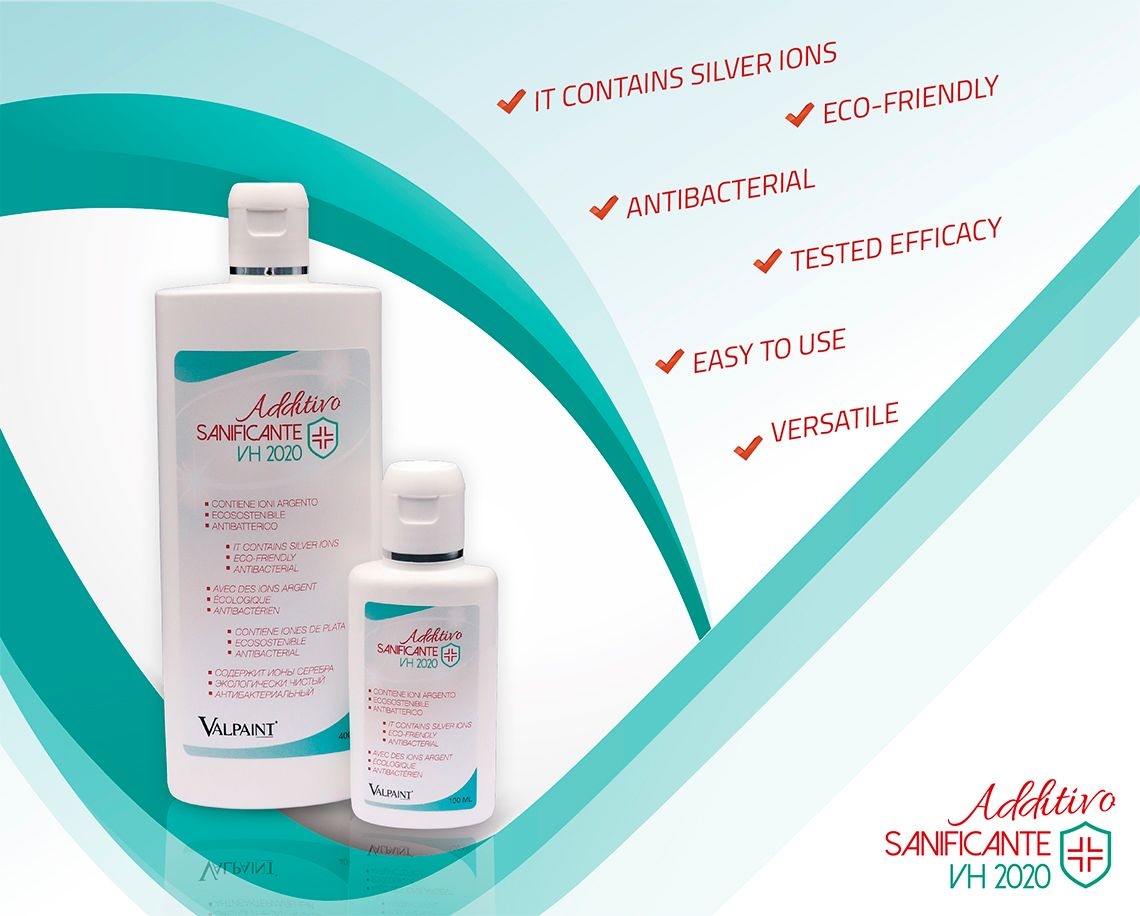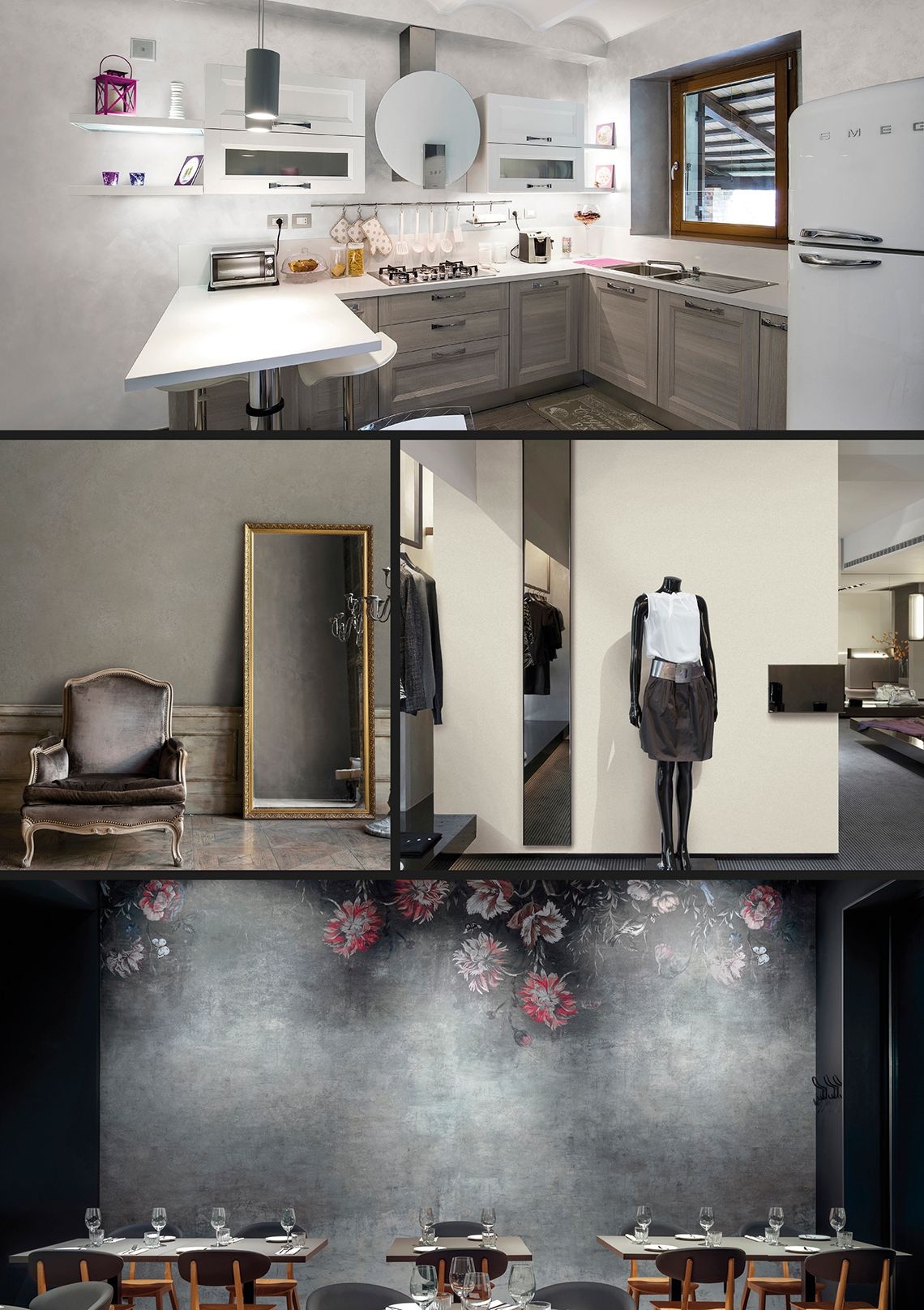The coronavirus emergency has forced us to rethink spaces such as our home and the office. Here’s how to protect them with anti-bacterial wall paints.
Anti-bacterial paint: ADDITIVO SANIFICANTE VH2020 and research conducted in Valpaint laboratories
Shops taken by storm, empty shelves, “out of stock” signs by the dozens, unendingly.
We saw this in all our supermarkets over the past few months, and these sad images probably still linger in our minds. And it wasn’t just the case of flour and yeasts, but also sanitising products.
The coronavirus emergency put us up against an unprecedented situation. It also compelled us to rethink our lives, starting from the places where we spend most of our time: our home and the office.
Consequently, we witnessed an exponential rise in the demand for cleaning and sanitising products for environments and surfaces. In some ways, however, this need also turned the spotlight on the issue of indoor pollution and the salubrity of the environments we live in.
Many questions were raised also in the architectural design sector, which has started to devise new solutions. The most debated aspects include the spaces to be designed and the materials used, from structural elements to finishes, such as decorative paints.
Anti-bacterial additive for paints: ADDITIVO SANIFICANTE VH 2020 by VALPAINT
VALPAINT, a leader in the production of decorative paints, has decided to conduct research on anti-bacterial wall paint and has started a series of studies focusing on products and the relevant fields of application.
These research activities have yielded ADDITIVO SANIFICANTE VH 2020, a water-based anti-microbial additive with silver ions for interiors that makes wall paint anti-bacterial due to its sanitising properties.
The VH 2020 sanitising additive:
• contains silver, a noble metal that acts without releasing into the environment substances that are harmful to man. Silver has been used since ancient times for its anti-bacterial properties in the prevention and control of infections. Nowadays, thanks to the new technologies, its use in the form of ions helps to neutralise bacteria, fungi and yeasts.
• can be used to create highly appealing decorated surfaces with anti-bacterial properties, while ensuring the salubrity of the environments where it is applied.
Moreover, the effectiveness of the VH 2020 anti-bacterial additive for paints has been tested in accordance with the ISO 22196 standard. This standard measures anti-bacterial activity on plastic materials and other non-porous surfaces:
Antibacterial materials and products have been widely and rapidly accepted by general consumers as fulfilling a relatively new function, which is distinguishable from the more traditional function of material protection.
Antibacterial products created by incorporating an antibacterial agent (biocide) can suppress the growth of bacteria on the surfaces of products whenever such growth can occur. They can keep surfaces clean and sanitary and can also have an advantage in reducing the impact on the environment by minimising diffusion of the agent.
(Excerpt from ISO 22196:2011 - Measurement of antibacterial activity on plastics and other non-porous surfaces. Source: iso.org)
With this new product, VALPAINT allows users to create highly appealing decorated surfaces while always ensuring the salubrity of the environments where it is applied.
The importance of anti-bacterial paint: an in-depth focus on pollution in indoor environments
When we talk about pollution, we immediately think about the smog produced by cars, particulates and fumes coming out of factory chimney stacks. In other words, everything about the outside air and its conditions.
In actual fact, pollution is also a danger for indoor and closed settings. When we talk about indoor pollution we refer to the contamination by harmful substances in closed spaces used for our private and social life and for non-industrial work: homes, public and private offices, hospitals, schools, barracks, hotels, banks, cinemas, cafés and restaurants, shops and sports facilities, but also means of transport.
As early as 2000, the World Health Organisation (WHO) acknowledged healthy indoor air as a fundamental human right. In 2009, this stance was further reinforced in the report “WHO guidelines for indoor air quality: dampness and mould”, which states that:
[...] People spend a large part of their time each day indoors: in homes, offices, schools, health care facilities, or other private or public buildings. The quality of the air they breathe in those buildings is an important determinant of their health and well-being.
Microbial pollution is a key element of indoor air pollution. It is caused by hundreds of species of bacteria and fungi, in particular filamentous fungi (mould), growing indoors when sufficient moisture is available. Exposure to microbial contaminants is clinically associated with respiratory symptoms, allergies, asthma and immunological reactions.
Microbial growth on interior surfaces and in building structures should be avoided or minimised, as they may lead to adverse health effects.
(Source: “WHO guidelines for indoor air quality: dampness and mould” - World Health Organization - 2009)
Since we all spend most of our time within closed environments, in recent years science has dedicated growing attention to the quality of the air within these environments. It has therefore become increasingly important to take care of it, starting from the use of anti-bacterial paint.
Substances that alter air quality in indoor environments: chemical, physical and biological agents
According to the Higher Institute for Environmental Protection and Research (ISPRA), the air in indoor environments is often made up of a highly variable mixture of components compared to what we find in the outside air: sometimes we may find higher concentrations indoors than in the outside air and there may be pollutants which are not found outdoors.
The substances that can alter the quality of the air in closed environments can be grouped into three categories:
1) chemical agents: indoor air pollutants include a series of natural or artificial substances that can act both in liquid form or in solid or gaseous form;
2) physical agents:ISPRA indicates three sources as the main physical agents responsible for air pollution in closed spaces: electromagnetic fields, noise pollution and radon;
3) biological agents: these are substances of biological origin produced both by the people who inhabit the environment and by animals and plants, or even by dust and air conditioners (which, unfortunately, are excellent sources of so-called biological contaminants). In particular, the main biological contaminants include:
• bacteria and viruses, which are carried by both humans and animals
• plant pollen
• fungi and moulds that form due to damp conditions
• mites, which are one of the main causes of allergies and asthma
• allergens of domestic animals released mainly through saliva, dandruff and urine
This in-depth focus will allow you to reflect on how important it is to live in healthy environments to safeguard our health. Choosing an anti-bacterial paint or the right anti-bacterial additive for paints is undoubtedly an effective method for protecting ourselves, without relinquishing the desire to have modern and stylish walls.